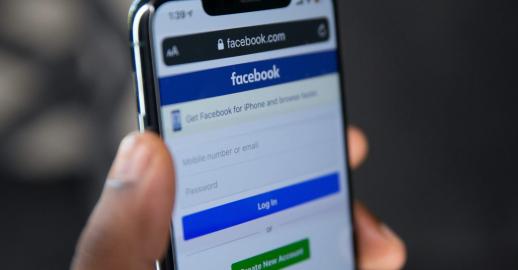How to Prioritise Your Marketing Time in 2021
6th January 2021
As we enter what could be another unique and challenging year, it’s important to look ahead at where we’re going and the trends we will likely need to adapt to as marketers. In this article, we take a look at seven key considerations to prioritise when marketing your business in 2021.
1. AI Technology
Marketers must deliver messages and offers that resonate with an individual’s expectations in order to excel at personalised brand engagement with consumers. A good way to gain the deep insights required to personalise the customer experience is the use of artificial intelligence (AI).
There are a number of businesses currently using AI technology and automation to assist and enhance, but not replace, their marketing efforts. This can be seen through voice search, visual search and smart assistants, like chat bots on a site or app. The Domino’s ‘Dom’ the pizza tracker app chat bot is a perfect example of interaction and the creation of a clear connection with a customer.
The data and insight provided by AI technology is helping brands to learn more about their audience and customers as well as enabling hyper-personalisation of customer experiences and marketing messages at scale.
2. Voice Search
Voice search will continue to be a major influence on how brands create content and market themselves online in 2021.
The smart speaker business is booming, with millions of households owning a Google Home or Amazon Echo. In fact, research by PwC showed that 61% of those aged 25–64 who already use a voice device intend to use it more in the future.
Even if your brand isn’t ready for smart speaker advertising, it’s important that your content is optimised for voice search.
Voice searchers use search differently, so slanting your content to serve these queries, as well as answering questions directly, can help to make your content more accessible to voice searches. This has the added bonus of making your content more likely to be picked up as a featured snippet or found on position zero on Google SERPs.
3. Visual And Video Content
Smart speakers and voice search are not the only widely consumed type of content that is becoming ever more popular. Visual content is just as important. It is often easier to consume, meaning your brand message may be absorbed with more ease.
You just have to look at the growth of image-focused platforms Pinterest and Instagram to see the proof of this. There has also been heavy investment in visual search technology, such as through Google and Pinterest Lens.
Another form of content that is becoming more popular is video, and in particular live video. This can be a great way to provide an interesting way for consumers to learn about your business, service or product. When the live element is added as opposed to a pre-recorded video, this makes video more engaging as the audience feels they’re a part of it and can influence the content, rather than just passively watching. This is particularly true when trying to increase engagement on your social channels, through TikTok, Facebook or Instagram Live, for example.
4. Featured Snippets In Google Search
Being ranked number one in search engine result pages is not necessarily the primary goal your business should be aiming for anymore. Featured snippets in Google search means that you can get the information that you have searched for on a Google results page often above the organic listings, without needing to click through to a website.
This highly coveted position on a SERP has been called ‘position zero’, so if you can be the first in your industry to get there, you’ll have an advantage over your competitors. It pays to stay up to date with the latest best practices for optimising your content, to get better SEO rankings for your business. The SEO category in the SilverDisc knowledge centre is a great place to find this information.
5. Integrated Online and Offline Experience
A seamless customer experience is always essential, no matter what year it is. But 2020 in particular has highlighted to many businesses and their consumers just how important an online experience can be, with the last six months seeing an unprecedented number of store closures due to COVID-19.
However, many online retailers and digital brands have thrived as massive numbers of consumers have shifted to moving more of their purchases online. E-commerce booming due to the pandemic can also be seen through stores embracing the shift to Instagram and Facebook shopping. Furthermore, this type of in-app purchasing reduces the steps traditionally required to convert a user to a customer.
This isn’t to say that consumers don’t still love to shop in physical stores, but businesses do need to adjust their marketing strategy to create seamless online and offline experiences and take advantage of this opportunity of increased digitalisation.
Armed with this knowledge, in 2021 businesses should consider these actions:
- Set Up Retargeting Ads: A majority of your traffic won’t purchase on their first visit to your site. Implementing a retargeting strategy will ensure you capture consumers, if they don’t make a purchase the first time they visit your site.
- Always Consider User Experience: If your website is slow, not optimised for mobile, has a clunky checkout process, or has poor usability in general, then it is advisable to make some changes. This is because any inconvenience for users can significantly reduce your conversion rate and also affect your SEO.
6. Responsible Consumerism
Brands want to do good and are more aware than ever of the effect their influence and buying habits have on the environment and society. Therefore, connecting with customers and building trust should be a top priority for your business in 2021 which can be achieved by evaluating your brand and marketing strategy.
How does your brand compare with your competitors? And how do you communicate your value?
Informed buyers want to buy from informed brands, meaning people are taking more care over the products they choose to buy and the brands they choose to associate with.
Brands that do not show some level of consideration or action to prove themselves to and align themselves with their customers – such as becoming a BCorp, supporting a movement (such as Black Lives Matter) or showing some social or environmental initiative – risk being left behind as customers choose brands that align with their own values.
7. Reconsider Your Target Market
Whilst the Millennial age group still makes up a significant proportion of the audience of many marketers, there has been the suggestion that Generation Z (those born from 1995-2010) should be an area of focus for marketers this year.
This is because the young people in this age group have grown up in a digital world and have very different viewpoints than generations that came before them. This opens up more opportunities to reach different segments of that audience through your digital marketing techniques.
If you’ve been focusing your marketing strategy on Millennials, it may be time to consider a marketing strategy that reaches the decision-makers of the future.
Are You Ready For 2021?
While marketing trends come and go, the basics of success remain the same: understand the needs of your audience and communicate with them clearly and consistently.
Now is the time to start planning your 2021 marketing strategy if you haven’t already. To have a successful marketing strategy for 2021, you will need to rely on a range of marketing techniques based on your unique business goals and audience. If you are interested in strategising your business goals, take a look at our digital marketing system (DMS).
Lastly, if you need help with any aspect of your digital marketing in 2021, then don’t hesitate to get in touch with us.






